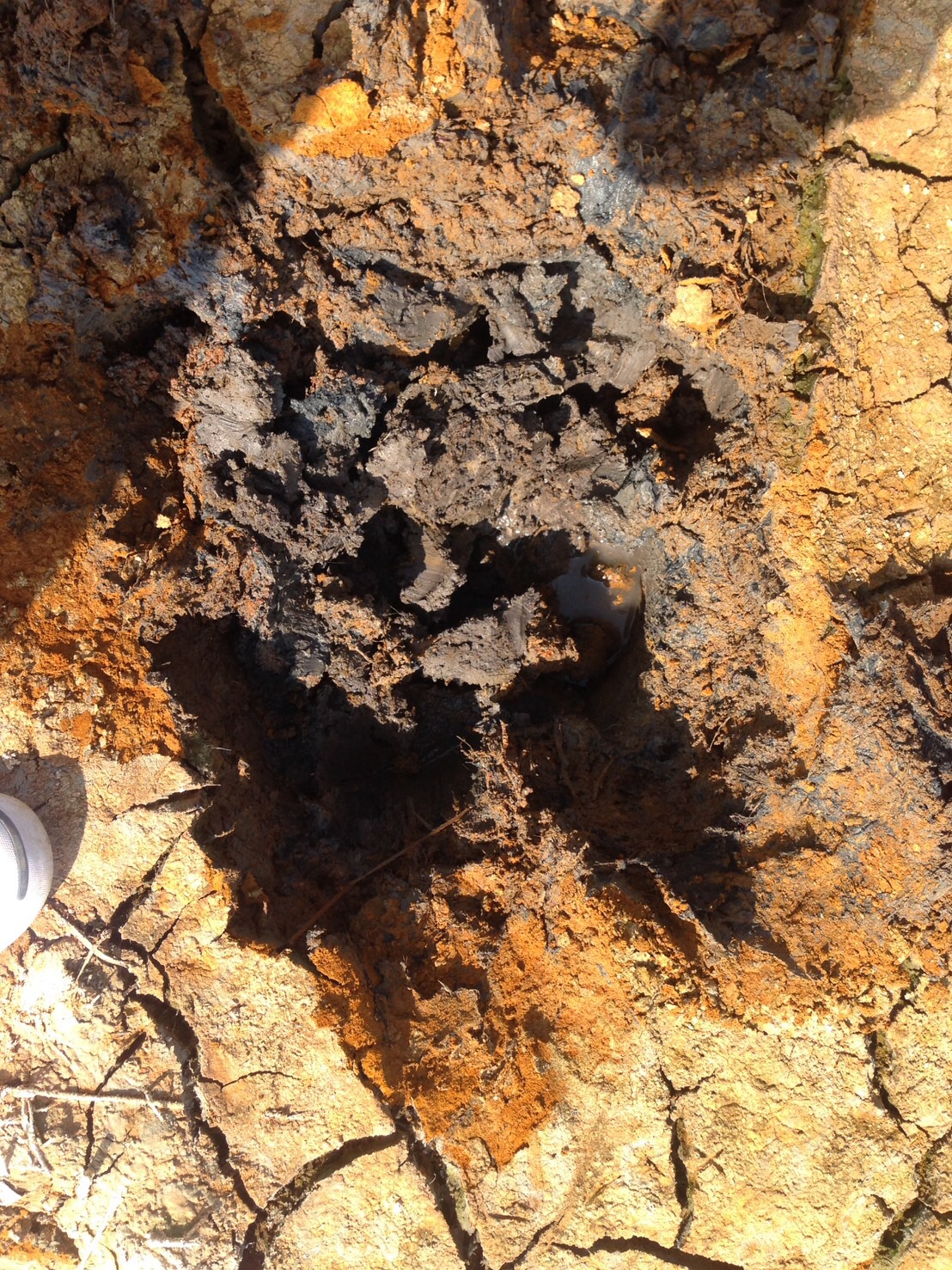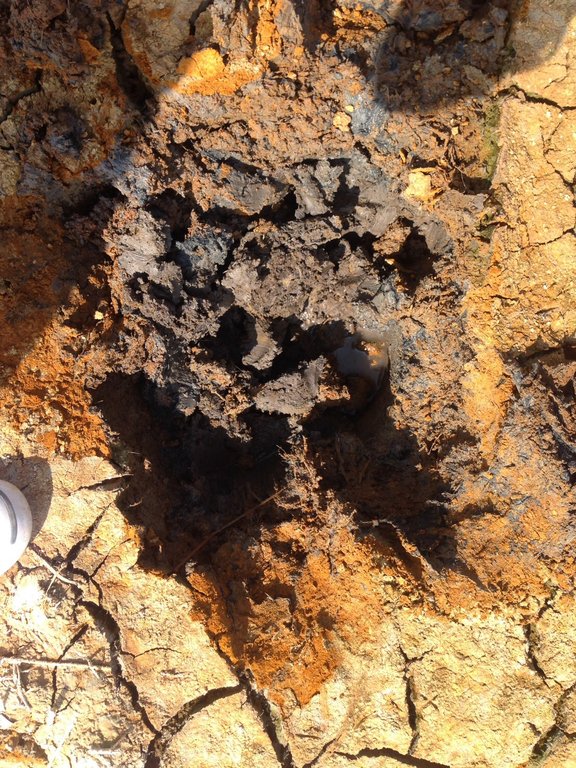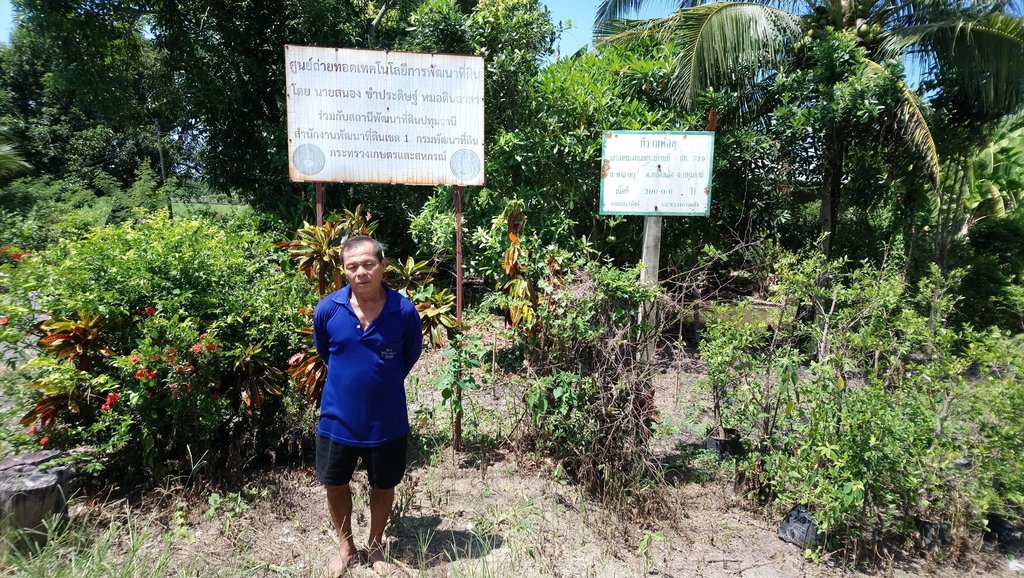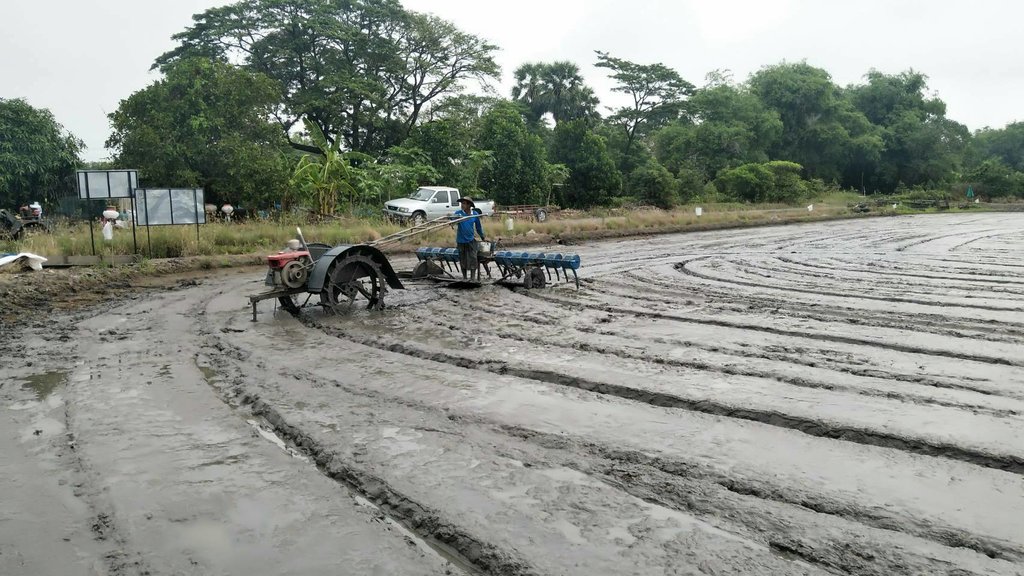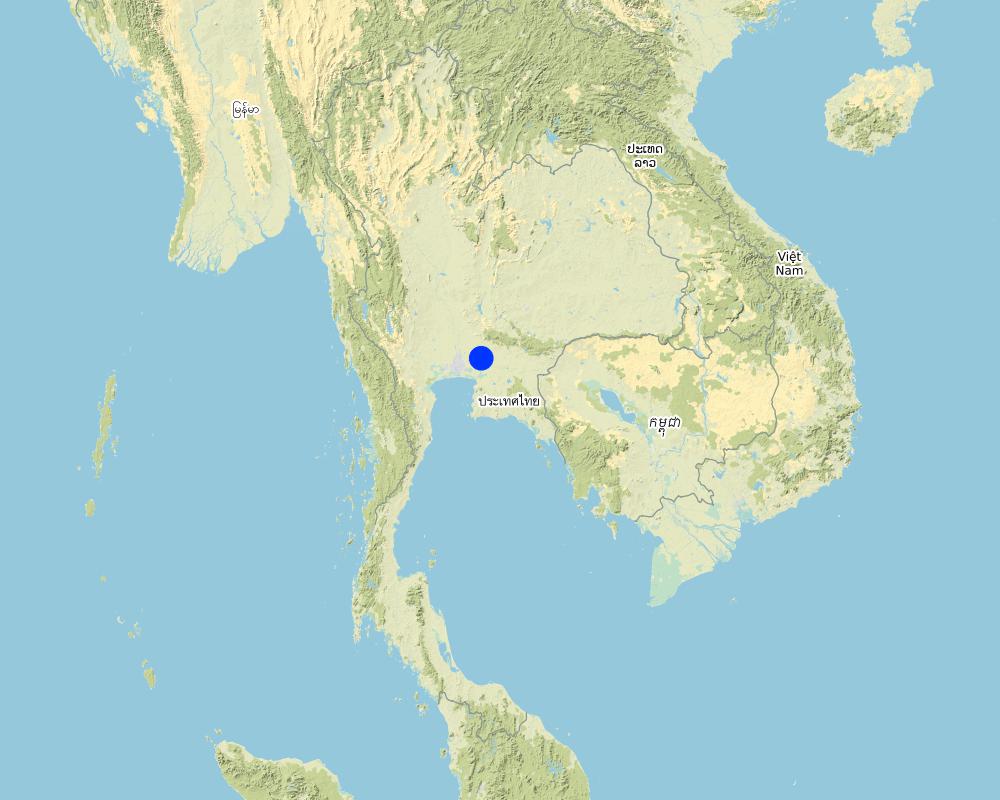The application of marl to improve acid soils [Thailand]
- Creation:
- Update:
- Compiler: Bunjirtluk Jintaridth
- Editor: –
- Reviewers: Rima Mekdaschi Studer, Pitayakon Limtong, William Critchley
-
technologies_4312 - Thailand
View sections
Expand all Collapse all1. General information
1.2 Contact details of resource persons and institutions involved in the assessment and documentation of the Technology
Key resource person(s)
land user:
1.3 Conditions regarding the use of data documented through WOCAT
The compiler and key resource person(s) accept the conditions regarding the use of data documented through WOCAT:
Yes
1.4 Declaration on sustainability of the described Technology
Is the Technology described here problematic with regard to land degradation, so that it cannot be declared a sustainable land management technology?
No
2. Description of the SLM Technology
2.1 Short description of the Technology
Definition of the Technology:
Acid soils are problematic, and the use of alkaline materials such as marl - agricultural lime that is excavated - helps to reduce the acidity and make the soil more productive.
2.2 Detailed description of the Technology
Description:
Adding marl to soils helps to manage acidity. Acidity is a problem in soil caused by iron sulphate that becomes sulfuric acid (H2SO4) upon oxidizing when exposed to the air. Therefore, it requires agricultural lime that are hydroxide, oxide compounds or carbonate with calcium or magnesium as the main component to neutralize or partly reduce the acidity. Agricultural lime is available mainly in the forms of slaked lime, marl, or ground limestone.
Acid sulfate soils are formed from the sediments of seawater or brackish water containing pyrite that changes to sulfuric acid upon oxidizing and accumulate in the soil. Acid sulfate soils are highly acidic, with low fertility. They are severely deficient in nutrients essential for plant growth such as phosphorus and nitrogen. Moreover, there are certain elements that are harmful to the plant growth such as iron, aluminium, manganese. Acid sulfate soils in Thailand occur along the East Coast, the West Coast and in the east part of the southern peninsula. Land Development Department reported that 35% of areas with acid sulfate soils are medium to severely acidic, limiting rice yields to between 625 and 1,560 kg/ha. When the Land Development Department started in 1963, it put the Acid Sulfate Soils Improvement as one of its prominent programs - and work still goes on up to now. The general practice has been to furnish farmers in the affected area with 1 ton of marl (CaCO3 deposit, excavated from the marl pit in Saraburi Province) per rai ( 6.25 rai = one ha). The objectives of using this technology are to (1) improve soils of acid property as soils are the basic resource for plant production, and (2) to increase the production of rice. Before applying marl, the land should be well levelled so that marl can react with acid soil efficiently. Tractors can enter and drop marl sacks over the paddy area, which is then spread by hand. The rate of marl to apply is around 6-12 tons/ha, depending on the soil pH.
2.3 Photos of the Technology
2.5 Country/ region/ locations where the Technology has been applied and which are covered by this assessment
Country:
Thailand
Region/ State/ Province:
Patumthani
Further specification of location:
Thung Rangsit area in the past was planted mainly to rice. Previously, the area of Moo 8, Moo 9, Salakru sub-district, Nong Suea district was Ratchaphatsadu land (state property) whereby the government allocated the land for not more than 4 hectares per farmer in 1969.
Specify the spread of the Technology:
- applied at specific points/ concentrated on a small area
Is/are the technology site(s) located in a permanently protected area?
No
Map
×2.6 Date of implementation
If precise year is not known, indicate approximate date:
- 10-50 years ago
2.7 Introduction of the Technology
Specify how the Technology was introduced:
- through land users' innovation
- as part of a traditional system (> 50 years)
3. Classification of the SLM Technology
3.1 Main purpose(s) of the Technology
- improve production
- reduce, prevent, restore land degradation
- conserve ecosystem
- protect a watershed/ downstream areas – in combination with other Technologies
- create beneficial economic impact
3.2 Current land use type(s) where the Technology is applied
Land use mixed within the same land unit:
No

Cropland
- Annual cropping
Annual cropping - Specify crops:
- cereals - rice (wetland)
Number of growing seasons per year:
- 2
Is intercropping practiced?
No
Is crop rotation practiced?
No
3.3 Has land use changed due to the implementation of the Technology?
Has land use changed due to the implementation of the Technology?
- Yes (Please fill out the questions below with regard to the land use before implementation of the Technology)
Land use mixed within the same land unit:
No

Cropland
- Annual cropping
Annual cropping - Specify crops:
- cereals - rice (wetland)
Is intercropping practiced?
No
Is crop rotation practiced?
No
3.4 Water supply
Water supply for the land on which the Technology is applied:
- mixed rainfed-irrigated
3.5 SLM group to which the Technology belongs
- integrated soil fertility management
3.6 SLM measures comprising the Technology

agronomic measures
- A2: Organic matter/ soil fertility
- A3: Soil surface treatment
A3: Differentiate tillage systems:
A 3.2: Reduced tillage (> 30% soil cover)
3.7 Main types of land degradation addressed by the Technology

chemical soil deterioration
- Ca: acidification
3.8 Prevention, reduction, or restoration of land degradation
Specify the goal of the Technology with regard to land degradation:
- reduce land degradation
- restore/ rehabilitate severely degraded land
4. Technical specifications, implementation activities, inputs, and costs
4.2 General information regarding the calculation of inputs and costs
Specify how costs and inputs were calculated:
- per Technology area
Indicate size and area unit:
1 ha
If relevant, indicate exchange rate from USD to local currency (e.g. 1 USD = 79.9 Brazilian Real): 1 USD =:
32.0
Indicate average wage cost of hired labour per day:
384 Baht
4.3 Establishment activities
| Activity | Timing (season) | |
|---|---|---|
| 1. | Soil analysis before the application of marl to know the rates of marl requirement | before land preparation |
| 2. | Paddy should be adjusted or minimum tilled because marl can react with acid soil efficiently. | during land preparation |
| 3. | Spreading the marl all over the plot. | during land preparation |
| 4. | Pumping water into the plot up to 10 cm above the soil level. Keep the water until the soil becomes soft. | during land preparation |
| 5. | Mixing the marl and wet soil and leave the mixture between 3-7 days. | during land preparation |
| 6. | Applying the chemical fertilizer with the recommended rate | during land preparation |
| 7. | Harvesting rice | harvest time |
4.4 Costs and inputs needed for establishment
| Specify input | Unit | Quantity | Costs per Unit | Total costs per input | % of costs borne by land users | |
|---|---|---|---|---|---|---|
| Labour | Labor costs for spraying herbicides | baht per hectares | 2.0 | 20.0 | 40.0 | 100.0 |
| Equipment | pumping water | baht per time | 1.0 | 100.0 | 100.0 | |
| Fertilizers and biocides | chemical fertilizer | baht per hectares | 1.0 | 200.0 | 200.0 | 100.0 |
| Fertilizers and biocides | herbicides | baht per hectares | 1.0 | 59.0 | 59.0 | 100.0 |
| Other | marl | dollars per hectare | 1.0 | 36.0 | 36.0 | 100.0 |
| Other | seeds | dollars per hectare | 1.0 | 84.0 | 84.0 | 100.0 |
| Total costs for establishment of the Technology | 519.0 | |||||
| Total costs for establishment of the Technology in USD | 16.22 | |||||
If land user bore less than 100% of costs, indicate who covered the remaining costs:
-
Comments:
-
4.5 Maintenance/ recurrent activities
| Activity | Timing/ frequency | |
|---|---|---|
| 1. | - | - |
4.6 Costs and inputs needed for maintenance/ recurrent activities (per year)
| Specify input | Unit | Quantity | Costs per Unit | Total costs per input | % of costs borne by land users | |
|---|---|---|---|---|---|---|
| Labour | - | - |
If land user bore less than 100% of costs, indicate who covered the remaining costs:
-
Comments:
-
4.7 Most important factors affecting the costs
Describe the most determinate factors affecting the costs:
herbicide price, marl price, and labour cost
5. Natural and human environment
5.1 Climate
Annual rainfall
- < 250 mm
- 251-500 mm
- 501-750 mm
- 751-1,000 mm
- 1,001-1,500 mm
- 1,501-2,000 mm
- 2,001-3,000 mm
- 3,001-4,000 mm
- > 4,000 mm
Agro-climatic zone
- sub-humid
5.2 Topography
Slopes on average:
- flat (0-2%)
- gentle (3-5%)
- moderate (6-10%)
- rolling (11-15%)
- hilly (16-30%)
- steep (31-60%)
- very steep (>60%)
Landforms:
- plateau/plains
- ridges
- mountain slopes
- hill slopes
- footslopes
- valley floors
Altitudinal zone:
- 0-100 m a.s.l.
- 101-500 m a.s.l.
- 501-1,000 m a.s.l.
- 1,001-1,500 m a.s.l.
- 1,501-2,000 m a.s.l.
- 2,001-2,500 m a.s.l.
- 2,501-3,000 m a.s.l.
- 3,001-4,000 m a.s.l.
- > 4,000 m a.s.l.
Indicate if the Technology is specifically applied in:
- not relevant
5.3 Soils
Soil depth on average:
- very shallow (0-20 cm)
- shallow (21-50 cm)
- moderately deep (51-80 cm)
- deep (81-120 cm)
- very deep (> 120 cm)
Soil texture (topsoil):
- medium (loamy, silty)
Soil texture (> 20 cm below surface):
- medium (loamy, silty)
Topsoil organic matter:
- high (>3%)
5.4 Water availability and quality
Ground water table:
5-50 m
Availability of surface water:
good
Water quality (untreated):
for agricultural use only (irrigation)
Water quality refers to:
surface water
Is water salinity a problem?
No
Is flooding of the area occurring?
No
5.5 Biodiversity
Species diversity:
- medium
Habitat diversity:
- medium
5.6 Characteristics of land users applying the Technology
Sedentary or nomadic:
- Sedentary
Market orientation of production system:
- subsistence (self-supply)
- commercial/ market
Off-farm income:
- less than 10% of all income
Relative level of wealth:
- average
Individuals or groups:
- groups/ community
Level of mechanization:
- mechanized/ motorized
Gender:
- men
Age of land users:
- middle-aged
5.7 Average area of land used by land users applying the Technology
- < 0.5 ha
- 0.5-1 ha
- 1-2 ha
- 2-5 ha
- 5-15 ha
- 15-50 ha
- 50-100 ha
- 100-500 ha
- 500-1,000 ha
- 1,000-10,000 ha
- > 10,000 ha
Is this considered small-, medium- or large-scale (referring to local context)?
- medium-scale
5.8 Land ownership, land use rights, and water use rights
Land ownership:
- state
Land use rights:
- communal (organized)
Water use rights:
- communal (organized)
Are land use rights based on a traditional legal system?
Yes
5.9 Access to services and infrastructure
health:
- poor
- moderate
- good
education:
- poor
- moderate
- good
technical assistance:
- poor
- moderate
- good
employment (e.g. off-farm):
- poor
- moderate
- good
markets:
- poor
- moderate
- good
energy:
- poor
- moderate
- good
roads and transport:
- poor
- moderate
- good
drinking water and sanitation:
- poor
- moderate
- good
financial services:
- poor
- moderate
- good
6. Impacts and concluding statements
6.1 On-site impacts the Technology has shown
Socio-economic impacts
Production
crop production
production area
land management
Income and costs
farm income
Socio-cultural impacts
food security/ self-sufficiency
SLM/ land degradation knowledge
Ecological impacts
Soil
nutrient cycling/ recharge
acidity
6.4 Cost-benefit analysis
How do the benefits compare with the establishment costs (from land users’ perspective)?
Short-term returns:
positive
Long-term returns:
very positive
How do the benefits compare with the maintenance/ recurrent costs (from land users' perspective)?
Short-term returns:
neutral/ balanced
Long-term returns:
neutral/ balanced
6.5 Adoption of the Technology
- > 50%
Of all those who have adopted the Technology, how many did so spontaneously, i.e. without receiving any material incentives/ payments?
- 91-100%
6.6 Adaptation
Has the Technology been modified recently to adapt to changing conditions?
Yes
If yes, indicate to which changing conditions it was adapted:
- changing markets
6.7 Strengths/ advantages/ opportunities of the Technology
| Strengths/ advantages/ opportunities in the land user’s view |
|---|
| Marl is an alkaline material, which can be used to solve the problem of the soil having acidity. The effect can last for several years. The cost of acid soil improvement by applying marl is low; farmers can invest in it. |
| Applying marl will increase more fertility to the soil, as there are nutrients with positive charges, namely calcium (Ca) and magnesium (Mg). |
| Applying marl will hasten the decomposition of organic matter in the soil and bring in more nitrogen in the form that plants can utilize better. |
| Strengths/ advantages/ opportunities in the compiler’s or other key resource person’s view |
|---|
| Applying marl will hasten the decomposition of organic matter in the soil and bring in more nitrogen in the form that plants can utilize better. |
| Phosphorus still remains in the form useful to plants. As acidity is reduced, the solubility of toxic elements, namely aluminium (Al3+) and iron (Fe2+) is also reduced. |
| Lime has the property in making soil friable. |
6.8 Weaknesses/ disadvantages/ risks of the Technology and ways of overcoming them
| Weaknesses/ disadvantages/ risks in the land user’s view | How can they be overcome? |
|---|---|
| Too much application of marl will make the rice plant become yellow because rice does not like strong alkalinity. | Use liming materials following lime requirement from laboratory analysis |
| Weaknesses/ disadvantages/ risks in the compiler’s or other key resource person’s view | How can they be overcome? |
|---|---|
| Too much application of marl will make the rice plant become yellow because rice does not like strong alkalinity. | Use liming materials following lime requirement from laboratory analysis |
7. References and links
7.1 Methods/ sources of information
- interviews with land users
5 land users
- interviews with SLM specialists/ experts
4 SLM specialists
When were the data compiled (in the field)?
24/12/2018
Comments:
-
7.2 References to available publications
Title, author, year, ISBN:
acid sulfate soil improvement
Available from where? Costs?
Land Development Department
7.3 Links to relevant online information
Title/ description:
acid sulfate soil improvement
Links and modules
Expand all Collapse allLinks
No links
Modules
No modules


